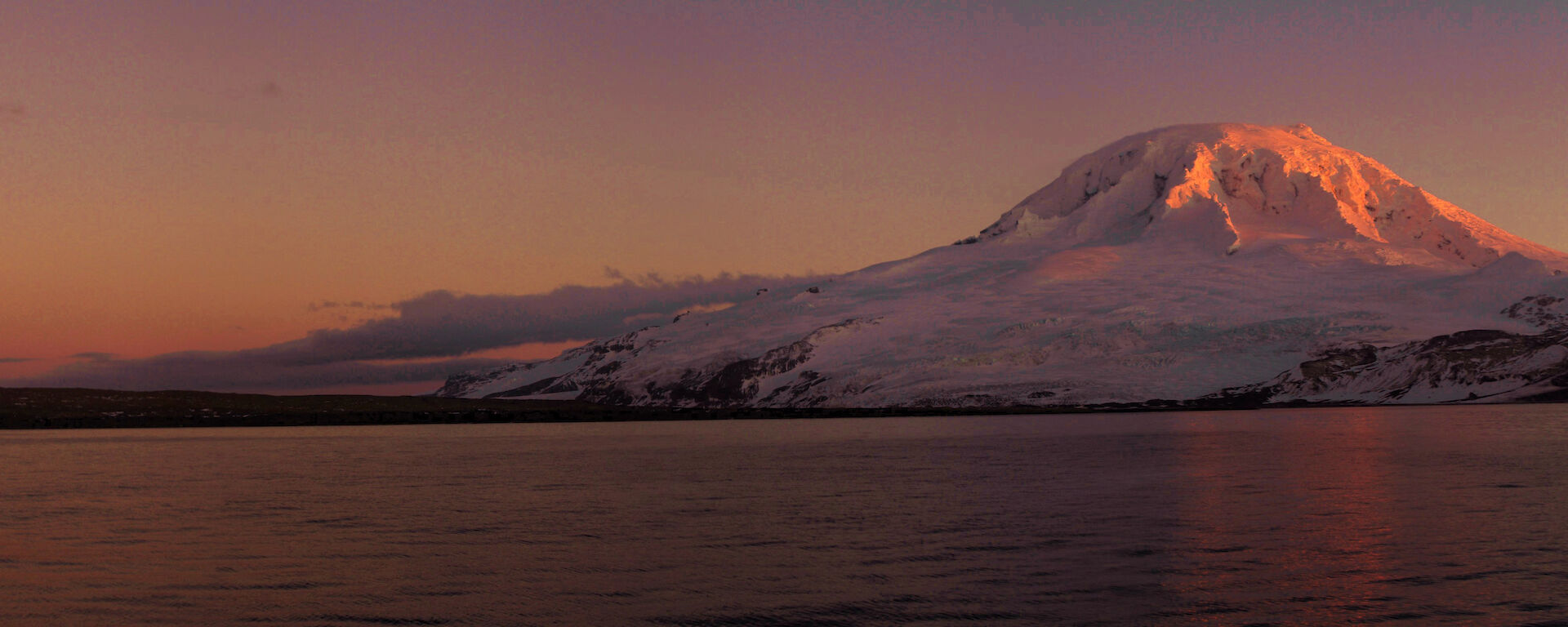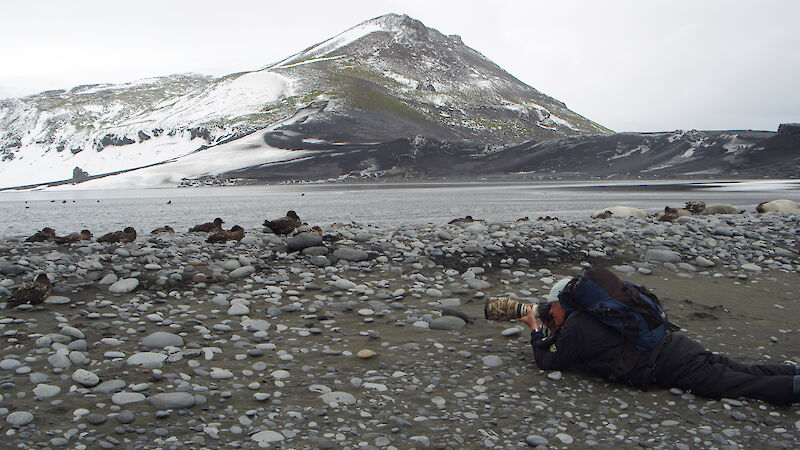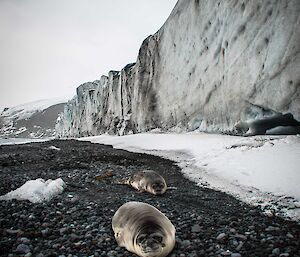As is typical of the Southern Ocean, the trip from Fremantle to Heard Island, into the prevailing direction of the weather systems that sweep monotonously over this vast stretch of ocean, was a challenging one for all involved.
Nine days of unrelenting pounding by the waves had all on board wondering why they would sign themselves up for such torture, let alone pay good money for the privilege.
A brief respite was found in the lee of Ilê Amsterdam, a minute speck of land in the roaring 40s, home to a small population of French scientists and support staff, and of the legendary, rare Amsterdam Island albatross — the object of desire on the ‘must see’ list for the multitude of ‘birders’ on board Heritage Expeditions Voyage 1262 (see previous story).
The following three days saw favourable weather conditions producing strong northerly winds, pushing the ship quickly towards our ultimate destination. But what was seen as a blessing while at sea rapidly became the enemy as the island drew closer — the northerly swell whipped up by the winds was running straight into Atlas Cove — the island’s only safe and usually protected anchorage.
Despite the blizzard-like conditions on the day of arrival, the bridge was swarmed by those wanting to get their first glimpse of the island. However, the temperamental mistress had other ideas… the island was typically shrouded in low cloud, visibility was down to about 200m and ice particles flew through the air, driven by 65–70 knot winds that were now whirling relentlessly into Atlas Cove from the south-west. All that effort undertaken in the previous 24 hours — vacuuming clothing, inspecting boots and carefully packing gear into the cleanest backpacks in existence would be for naught today; there would be no landing.
After an unpromising start to our second day at Heard, the first decent sights of the island were had as the shrouding skirts of cloud slowly rose to reveal the coastal flanks of the island. Eventually, the predictions of the weather bureau came roaring into reality, with Atlas Cove finally providing favourable landing conditions. There was a mad scurry as people clambered to eat their lunch, dress themselves warmly, gather their gear and pass through the biosecurity foot baths. Within half an hour their dreams were realised, as they waded ashore in the frigid shallows of Atlas Cove, staring in disbelief at the vista that spread before their eyes — elephant seals making horrendous noises in the shallows, wind whistling across the barren sands of the Nullarbor, ice jammed up against the windward side of plants that were clinging to the edge of their existence, light mantled sooty albatross gliding across wind-blown skies, and the smell — that distinctive mix of something freshly maritime mixed with the deep organics of a land dominated by animal life.
Standing on the beach, each group of tourists surrounding me in a tight huddle, I gave one final briefing to orient everyone and reinforce the rules, before they were off on their own Heard Island adventure, scattering to the far corners of the Atlas Cove visitor zone. Many headed towards the nearest penguin colony, keen to add the southern rockhopper to their list of observed species. Others sought the solitude of a vast plain of black sand that stretched between the landing point and the Baudisson Glacier. After 12 days in the confines of a small, rolling ship, this was heaven!
As the day wore on the weather conditions improved, until by 5 pm, a rare spectacle was witnessed. The cloud completely dissipated and the island was lit by glaring sunlight bouncing off the great sheets of ice that dominate the landscape above 300m. And there it was — Big Ben, the massive dome that tops the island, so rarely seen without cloud from Atlas Cove, bathed in bright sunshine. The sun’s rays filtered through the steam that slowly wafted from the volcanic fumaroles close to the summit. It was only now that the enormity of this island became apparent to most… the 2745m pinnacle of Big Ben — known as Mawson Peak — is the highest point in the Commonwealth of Australia outside the Australian Antarctic Territory.
An exhausted mob slowly made their way back to the ship as the setting sun bathed the island in the purples, oranges and reds, so often not considered part of the colour palette in ice-dominated environments. Dinner was eaten amongst a cacophony of chatter about the experiences just had, the things witnessed and the amazement at the raw beauty of a place they’d only ever seen in pictures. Most had sated their appetite, been blessed with the most spectacular day Heard Island had to offer. For Rodney Russ, Expedition Leader, the pressure had visibly lifted from his shoulders — if another landing was not possible, at least everyone was happy, so he was happy!
The following day, rough conditions again foiled plans of a day ashore, so a visit to the rarely observed McDonald Islands was planned. A beautiful clear day ensured that the island group was fully visible, although the recent volcanic activity, including the formation of under-sea reefs, piqued the nerves of the Captain enough to make him keep his distance. Still, from about two kilometres away, telephoto lenses came into their own, with digital imagery confirming the return of breeding penguins and albatross to the island, notably absent some 10 years prior, due to a huge amount of habitat destruction through volcanic activity.
Upon return to Atlas Cove in the late afternoon the seas had calmed, enabling a second landing the following morning. By lunchtime it was all over. The dream of Heard Island had become a reality for this group, something to be talked about for the rest of their lives. For some, this had been a totally new experience, something invigorating, enlivening, exciting. For me, that familiar pang of leaving behind a place I love, with no idea of when or if I will ever see her again kicked in. On our slow journey home, the experience reinforced my understanding of how important the Australian Antarctic Division’s role is in managing this special place: why we go to such lengths to protect it from accidental introduction of alien species; why the role of a HIMI inspector is so important, not only in enforcing the permit conditions, but also being able to take such a privileged group of expeditioners on that journey of understanding of environmental protection. And why the science we undertake at Heard Island is so integrally important for management.
The risk of tourism had been mitigated — we’d just had the most fantastic experience without leaving any negligible impact on this fragile, beautiful natural environment.
Kate Kiefer
Australian Antarctic Division




